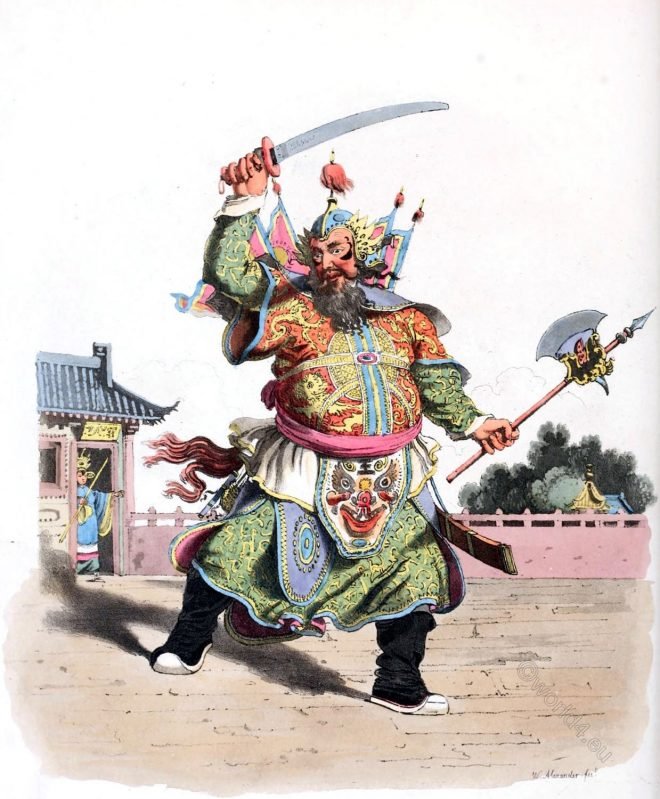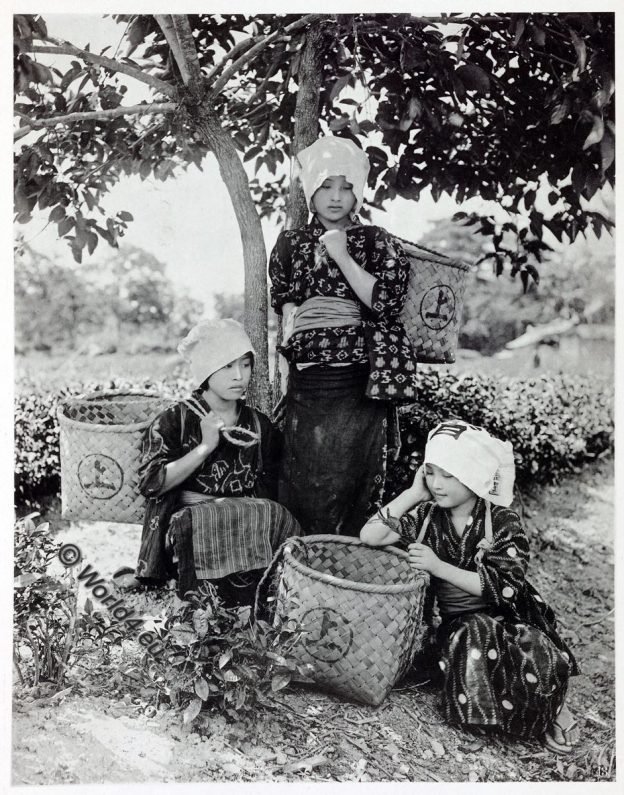Kagekiyo. This plate illustrates well the voluminous nature of the medieval ceremonial garments.
Tag: Theatre
A Chinese comedian who portrayed an enraged military officer
A sketch of a Chinese comedian performing his part before the the British Ambassador, December 19, 1793, at Canton.
Kazuma Ogawa. Costumes & customs in Japan.
Costumes & customs in Japan by Kazuma Ogawa. Tokyo 1892
“No. I, Iidamachi, Shichome, Kojimachiku, Tokyo, Japan.”
Sarah Bernhardt (1844-1923). French actress
Sarah Bernhardt (actually Marie Henriette Rosine Bernardt) was a French actress. She is considered the most famous actress of her time.
Marc Antony and the dead Caesar. Shakespeare’s Julius Caesar.
Shakespeare’s “Julius Caesar.” The Tragedy of Julius Caesar is a 1599 resulting tragedy by William Shakespeare, which is based on the historical person Julius Caesar.
The Sun King in theater costume. Louis XIV at the carrousel.
Le Roi soleil en costume de théâtre. Louis XIV au carrousel. Costumes civils et militaires des Français à travers les siècles.
Theatricals costumes at Nagasaki Japan. Japan Folk Theater.
Theatricals costumes at Nagasaki Japan. From the book: Two journeys to Japan. 1856-7, by Kinahan Cornwallis. Illustrated by the author. Published by Thomas Cautley Newby. London 1859.
Costume of Dione, Mother of Venus by Léon Bakst.
Fantaisie Sur Le Costume Moderne, Dioné’, By Léon Bakst 1914.
Performance of the actors, at Nagasaki Japan.
Ladies witnessing the performance of the actors, at Nagasaki Japan. Source: Two journeys to Japan. 1856-7, by Kinahan Cornwallis. Illustrated by the author. Published by Thomas Cautley Newby. London 1859.
No masks. Noh-men or Omote. Japan.
The noh masks, known in Nippon as Noh-men or Omote, jap. 能楽 constitute a very important accessory to the noh.










